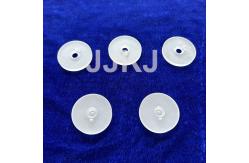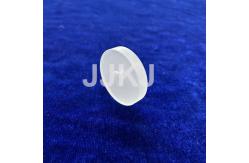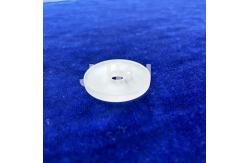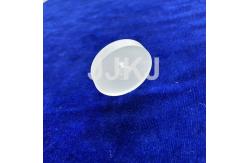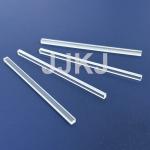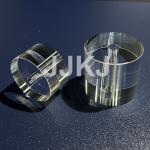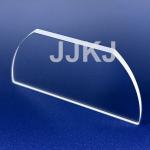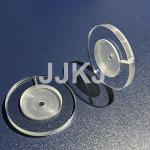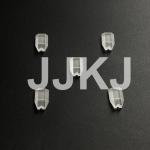Sapphire Materials
Sapphire is composed of alumina, and its crystal structure is
hexagonal lattice structure.
Synthetic sapphire common application facets are A-Plane,C-Plane,
and R-Plane. Due to the wide optical penetration band of sapphire,
it has good light transmission from near ultraviolet (190nm) to
mid-infrared. Therefore, it is widely used in optical components,
infrared devices, high-intensity laser lens materials.
Sapphire also has the characteristics of high sound velocity, high
temperature resistance, corrosion resistance, high hardness, high
light transmittance, high melting point (2045℃), etc., so it is
often used as a material for photoelectric components.
Properties of Single Crystal Sapphire
| Chemical formula | Al₂O₃ |
| Purity | 99.999% |
| Crystal structure | Hexagonal |
| Density | 3.98g/cm³ |
| Hardness Mohs | 9 |
| Fusion point | 2045℃ |
| Boiling point | 2980℃ |
| Coefficient of Thermal Expansion | 5.8×10 -6 /K |
| Specific heat | 0.418W.s/g/k |
| Thermal conduction | 25.12W/m/k(@100°C) |
| Refractive index | no=1.768 ne=1.760 |
| dn/dt | 13×10-6/K(@633nm) |
| Transmission | T≈80%(0.3-5μm) |
| Permittivity | 11.5(//c), 9.3(⊥c) |
Sapphire optical components' applications
1.Laser Systems: Sapphire is frequently used in laser systems for its high optical
transparency, thermal conductivity, and resistance to laser-induced
damage. It serves as windows, lenses, and laser rods in solid-state
lasers, as well as beam splitters and optical isolators.
2.Aerospace and Defense: In aerospace and defense applications, sapphire optical
components are used in aircraft windows, missile domes, and
targeting systems. Their hardness and scratch resistance make them
ideal for protecting sensitive optical systems in harsh
environments.
3.Medical Devices: Sapphire optics are utilized in medical devices such as
endoscopes, surgical lasers, and biomedical sensors. Their
biocompatibility, optical clarity, and resistance to sterilization
processes make them suitable for use in medical diagnostics and
treatments.
4.Optical Communication: Sapphire optical components play a role in optical communication
systems, including fiber-optic networks and telecommunications
equipment. They are used as fiber-optic connectors, waveguides, and
optical switches due to their low insertion loss and high
reliability.
5.Scientific Instruments: Sapphire is used in various scientific instruments, including
spectrometers, microscopes, and telescopes. Its optical clarity,
thermal stability, and resistance to chemical attack make it
valuable for precision optical components in research and
analysis.
6.High-Temperature Environments: Sapphire optical components are employed in high-temperature
environments, such as combustion chambers and industrial furnaces,
where traditional optical materials would degrade. Their thermal
stability and resistance to thermal shock make them suitable for
monitoring and imaging applications in extreme conditions.
7.Substrate for Electronics: Sapphire wafers are used as substrates in the production of
light-emitting diodes (LEDs), radio frequency integrated circuits
(RFICs), and other electronic devices. Their high thermal
conductivity and electrical insulation properties make them ideal
for supporting semiconductor materials and enhancing device
performance.
8.Optical Sensors: Sapphire optical components are utilized in optical sensors for
various applications, including environmental monitoring, chemical
sensing, and industrial process control. Their optical
transparency, stability, and resistance to harsh conditions enable
the accurate detection and measurement of light signals.
FAQ:
Q:What is your minimum order requirement?
A:MOQ: 10 pieces
Q:How long will it take to execute my order ?
A:10-25 days after confirming the payment.
Q:Can you give warranty of your products ?
A:We promise the quality, if the quality has any problems, we will
produce new produces or return you money.
Q:How to pay?
A:T/T, Paypal, West Union,etc.
Q:Can you produce custom optics?
A:Yes, we can produce custom optics

